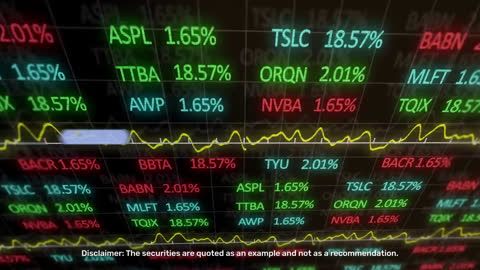Understanding how to read stock charts is a key concern for investors, particularly those new to the stock market. Successful investment involves comprehensive evaluation, including both the fundamental aspects of a company, such as its financial health and management, and the technical aspects, like analysing stock price movements.
If you are considering investing in a specific company’s stock, technical analysis can be your ever-reliable partner. It includes interpreting stock charts, enabling you to observe how the stock price has responded to market dynamics over time and pinpoint trends that could form your investment decisions. This elevates the importance of learning how to read stock charts even more.
In this article, we will cover the common types of stock market charts and understand a few techniques that strategic investors employ to spot patterns and trends and make profitable trades.
Types of stock charts
The first step in learning how to read stock charts is to know the most common types of stock charts. Mostly, investors and traders use three types of charts: bar, line, and candlestick.
Line chart
A line chart has a single line that connects multiple closing levels of stock in a set period. For a beginner, line charts can be good for understanding trends. However, for experienced traders, line charts are often inadequate when it comes to expanding on a specific day’s trading and intraday fluctuations.
Bar chart
Bar charts are a great way to learn how to read stock charts and understand the range of movement of a stock. They contain information on the highs and lows of the stock to help understand volatility, as well as the opening and closing prices. The vertical height of the bar is indicative of the highs and lows and there are small horizontal lines on the right and left side that indicate closing and opening prices, respectively.
Candlestick chart
Candlestick charts are a staple among traders. They are a variation of bar charts. Candlesticks also contain information on the highest and lowest stock price points and the opening and closing prices. Candles are a great indicator of bullish and bearish trends. In addition to the information mentioned above, candlesticks also display more information on the trading trends through green and red coloured candles. If you know how to read stock charts and candlesticks patterns, you can decipher trends and patterns of market movements. Candlestick charts also give potential signals for entry and exit points in various stocks.
How to spot patterns in stock charts?
Understanding how to read stock charts is a basic skill necessary for all in stock market trading. However, effectively interpreting the data they contain is another skill altogether. Let us take a look at a couple of the common patterns, trends, and indicators to look out for.
Suggested read: What is inside candle pattern
Resistance and support
The support level of a stock is a price floor. When a stock is on a downward trend, it is expected that there will be a trend reversal when it hits the support level. At the support level, the sellers start losing control to the buyers as the stock prices rise again.
On the other hand, the resistance level is kind of like a ceiling for rising price trends. When a stock is on an upward trend and hits the resistance level, a price reversal is expected. At this point, buyers have to push extra hard to continue the upward rally and break the resistance level.
Support and resistance levels are psychological markers. They are formed by an interplay of many factors, including trader sentiments and historical movements. For a strategic investor in the stock market, tracking these levels is important to keep tabs on investments.
Price reversal and breakout
When you know how to read stock charts, identifiable patterns may emerge that provide insights into the beginning and end of trends, suggesting potential entry and exit points for traders.
Traders who know how to read stock charts seek confirmation of trends through multiple and subsequent indicators, like consecutive candlesticks to the prior trend. For instance, to predict and validate a trend reversal from an upward movement to a downtrend, a close analysis of candlestick charts is important, as multiple candles have to be viewed in tandem. Candlestick patterns could range from the morning star candle pattern to Doji, hammer, and more, each with its meaning and significance.
Besides price reversals, breakout patterns are effective indicators for potential entry and exit points in the stock market. These include bullish and bearish flags, ascending triangles, descending triangles, and pennants, among others.
Suggested read: Doji candlestick pattern
Besides these, there are several other patterns and indicators to recognise stock trends, as trading entails continuous learning and improvement.
Conclusion
Mastering how to read stock charts is fundamental for investors and a crucial part of technical analysis. Learning how to interpret various types of charts—line, bar, and candlestick—provides valuable insights into price movements and trends. Moreover, recognising patterns, such as support and resistance levels, price reversals, and breakout patterns, equips traders with the knowledge to make informed decisions about entry and exit points and navigate the trading landscape effectively.




